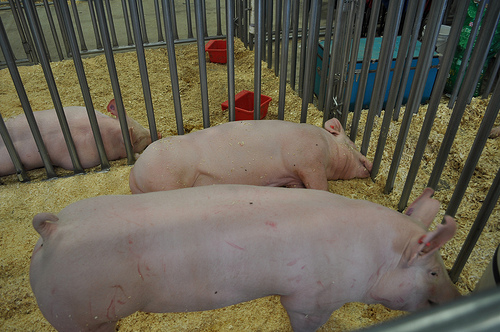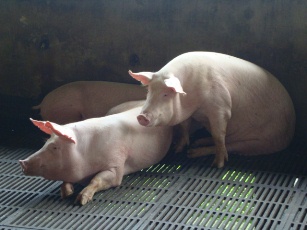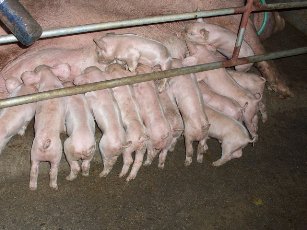Swine production in the Philippines is a P191-billion industry and is the largest among the livestock and poultry industries of the country. The Philippine swine industry is ranked 8th in the world, in terms of the volume of pork production and number of breeding sows.

Despite being dynamic and technologically advance, the local pig industry is still confronted with inefficiency of production due to low sow productivity. Thus, the Philippine Council for Agriculture, Aquatic and Natural Resources Research and Development of the Department of Science and Technology (DOST-PCAARRD) supported R&D initiative to improve the productivity of the Philippine swine industry.
To date, the application of gene marker was developed by the Philippine Carabao Center (PCC) and Bureau of Animal Industry (BAI) in partnership with the Accredited Swine Breeders Association of the Philippines (ASBAP). Sixteen (16) gene marker protocols associated to high litter size, fast growth rate and meat qualities as well as seven markers for screening of genetic defects and disease resistance were optimized. The adoption of the gene marker technology by the swine breeder farms is expected to increase productivity and efficiency in terms of number of pigs weaned and liveweight produced per sow per year.

In other swine-producing countries, the application of gene markers that are associated to economically important traits has resulted in significant improvement in the number of pigs produced and consequently the hog liveweight produced per sow per year.

In addition, gene marker assisted selection also facilitates genetic improvement in terms of productivity and production efficiency, meat quality, disease resistance, and in screening against genetic defects in swine breeding herds.
The R&D initiatives for swine aim to increase pigs produced per sow per year by 4.6 piglets, which is equivalent to an additional 460 kilograms of hog liveweight or a 25?30% increase in pork production without increasing the breeder pig population.
It also hopes to capacitate the private swine group in establishing and operating its laboratory to cater to the needs of the local swine industry.
DOST-PCAARRD will showcase swine genomics including other agri-aqua S&T research and development (R&D) outputs on March 2-4, 2016 during the SIPAG FIESTA at its headquarters in Los Baños, Laguna.
SIPAG, a technology transfer strategy, embodies the Council’s commitment to DOST’s Outcome One in a bid to ensure that the fruits of R&D activities for the agri-aqua sectors will be a blessing for every Juan.
by Livestock Research Division, DOST-PCAARRD S&T Media Service
